Wasn’t a clutch of eggs important last time around as well, for Godzilla? It’s cool. I mean, it shows Jurassic Park influence—’nature always finds a way’—but more than that, it suggests that in order for us to keep these science-fiction monsters believable, we’re having to apply biology to them. We’re giving them life cycles outside their brief, usually-tragic rampages. In the case of this Godzilla, though, it actually feels a little bit more like a course correction, of sorts. From Pacific Rim, I mean, whose kaiju had of course already starred in Cloverfield, The Mist, and on and back. But, as far as giant monsters go, we can’t get enough, really. What Pacific Rim did was just elide that fascination with the then- (and soon to be again) fad of giant robots — Transformers, Battleship.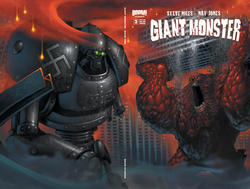
What this Godzilla is correcting, though, it’s locating the giant monsters here on Earth, instead of via an interdimensional portal to some place Thor should have cleaned up long ago. This is important because in Pacific Rim, the threat of aliens makes that an invasion story, one Adrien Veidt would have loved, as it catalyzes humanity into a single unit, erases the differences we bicker about, reminds us we’re in this together, gives us a common cause. I’m not saying this Godzilla doesn’t have that Independence Day blockbustery dynamic built in as well, but, whereas ‘aliens,’ at least to this Blackfeet, are always a big fancy metaphor for colonization (I don’t see any other way to watch Cowboys and Aliens), radiation monsters, they’re more a critique of unchecked scientific progress, an indicator of our guilt (and subsequent punishmnet) for splitting the atom and using it as a weapon, letting the waste leak everywhere, making the fish in Homer’s river have three eyes. Granted, the backstory for these “M.U.T.U.”s (‘Massive Unknown Terrestrial’-somethings, I think) draws them as much more ancient, but still: they’re rising again now, in what we call the nuclear age, and that’s not supposed to suggest anything?
What’s also cool with Godzilla — with all of them, I think, though I’m no historian of giant monsters — is how handily it plays on the prejudices we humans are of course going to subscribe to: giant, destructive bi-peds with eyes we recognize as eyes of course occupy the moral highground over giant, destructive spiders (and other, unnamed insects . . .). Granted, playing into those codes, into that familiarity, it make Godzilla a little too much of a, as the news suggests, ‘savoir of the city,’ a giant Rocky arising when needed, to put down this Clubber Lang, this Drago, this Thunderlips, but at this point in the story — I have no idea how many appearances Godzilla’s made on the big screen — you’ve got to ask yourself what’s left, right? Better effects, sure, but buildings falling down more realistically doesn’t a story make. And, since about Reign of Fire, I’d say, Hollywood’s been able to render dragons fairly realistically (even if they don’t all talk with Sean Connery’s voice).
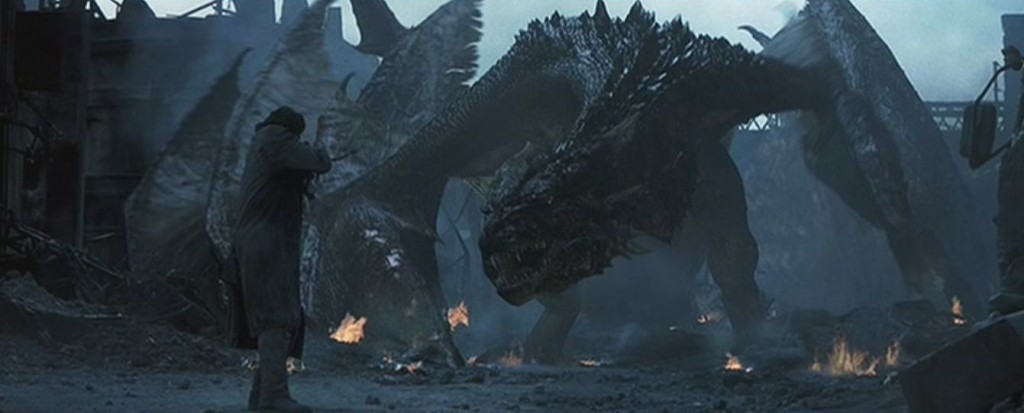
So: what does this Godzilla bring to the table that hasn’t been there before, right?
Well, unlike Pacific Rim, women are back to being damsels, more or less, for worse instead of better. And, taking a cue from I’m-not-sure-where, little kids are used here to anchor and polarize so many scenes. Kids that are never used in the story again, but that, for this scene or sequence, are supposed to up the stakes, I think, and give our hero more chance for, you know, heroism. It’s odd; it almost feels like there was a producer watching the rough cuts, and saying, You know, that was all right, sure . . . But what if we added a little kid to that scene? I’m talking an especially powerful, charismatic producer, who’s suggestions are marching orders, who wears gold-plated diapers.
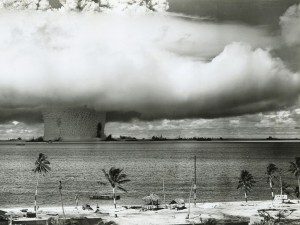
One thing I really appreciated with Godzilla this time around, though, it was how much story was visually packed behind the opening credits. It handily rewriting what we all know as history. Seriously, give an audience a quiz after those first three or four minutes, and nine out of ten of them will demonstrate that they’ve been positioned exactly as the story wants them to be. It’s some excellent exposition-handling, on the order of that opening sequence in Up, or District 9. Except not as obtrusive as either of those. I could have watched this Godzilla‘s opening credits for the whole feature, I think.
. . . except for the fact that every single Godzilla movie, it’s a waiting game: when do we get to see the big guy? When when when? Like Shyamalan in The Sixth Sense, though, this Godzilla knows that the longer we wait for ‘proof,’ the better it’ll be. Which isn’t to say there aren’t some (updated) big bad monsters stomping around on-screen, of course. As it turns out, some version of the Dharma Initiative has been shepharding them for a few decades, now, and right below Fox Mulder’s nose (though our crazy-like-a-fox character here, Brian Cranston, he’s of course hot on the — to him — very personal trail). And of course this all goes south pretty predictably. And that’s not a bad thing, either: if it doesn’t go south, the movie doesn’t happen, right?
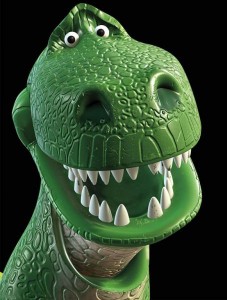
I do worry a bit about this world, though. Remember for so long how all the zombie movies had to have this ‘learning curve,’ wherein all the characters had to ‘figure out’ that these walking dead are infectious, killable by headshots, all that? Those movies, they were happening in a world not our own: when we see a dead dude slobbering around, we yell “Zombie!” and get into double-tap mode. Which is to say, zombie movies, zombie stories, they exist in our world, and for a long time, in movies, they never did. It’s kind of the same here. I mean, I can go along with the conceit that the Godzilla franchise never got kickstarted, sure. And maybe we never even got hooked on King Kong fighting giant snakes and the occasional pterodactyl. But, look at the action figures the kids have: are those tyrannosaurs, or are they something more movie-inspired?
I’m being too picky, I know, but, going by headsize (small), they’re Godzilla. Which is a fun in-joke, of course. Except it completely fries the world of the movie, for me. Or, it’s like, talking X-Files again: you know how frustrated you always get, that that Very Important Disc Mulder’s finally got his hands on, it turns to smoke? That sucks, yes, but it resets that world for the next episode, too. And that’s so important. If Fox’s CD ever actually made it to the media, then suddenly the X-Files would be happening in a world divorced from ours, a world in which aliens are proven. It’s kind of the same here, for me: this Godzilla — unlike Jurassic Park, which used the unassailable science of amber — it exists in a world divorced from this made-up-monster-dependent world I live in. So it’s happening on-screen, instead of, maybe, in the parking lot outside the theater. Which is kind of a bummer, I suppose. But also pretty great, as I don’t want to get stepped on, or barbecued with what looks like a butane flame.
However, there’s a much more interesting question to ask of this Godzilla: how did we get here? One way to look at it is a series of one-upsmanships, everybody trying to create a cooler giant monster. And that makes good sense, and is especially compelling as we’re the beneficiaries of that kind of game (well, I suppose the studios have a dog in that race as well).
I look at it different, though.
Remember the world Cabin in the Woods was trying to keep in balance? Remember how those bureaucratic slashers, their main job, it was to supply dream fuel for the slumbering giants of yore? How, if those sacrifices ever stopped, well, then those “Ancient Ones,” they would rise again, and, much like Nix, ‘murder the world.’
I’ve got another title for this Godzilla: Cabin in the Woods 2 — The Elder Gods Are Awake.
Run.
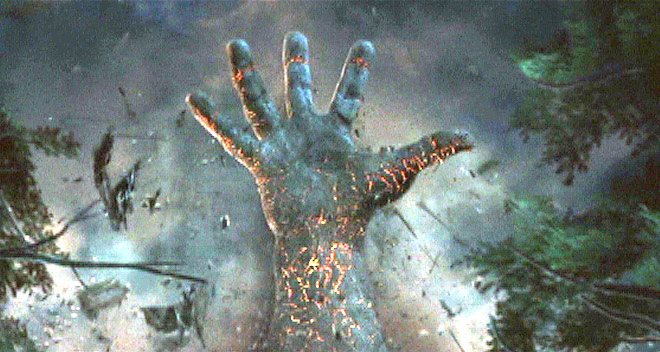





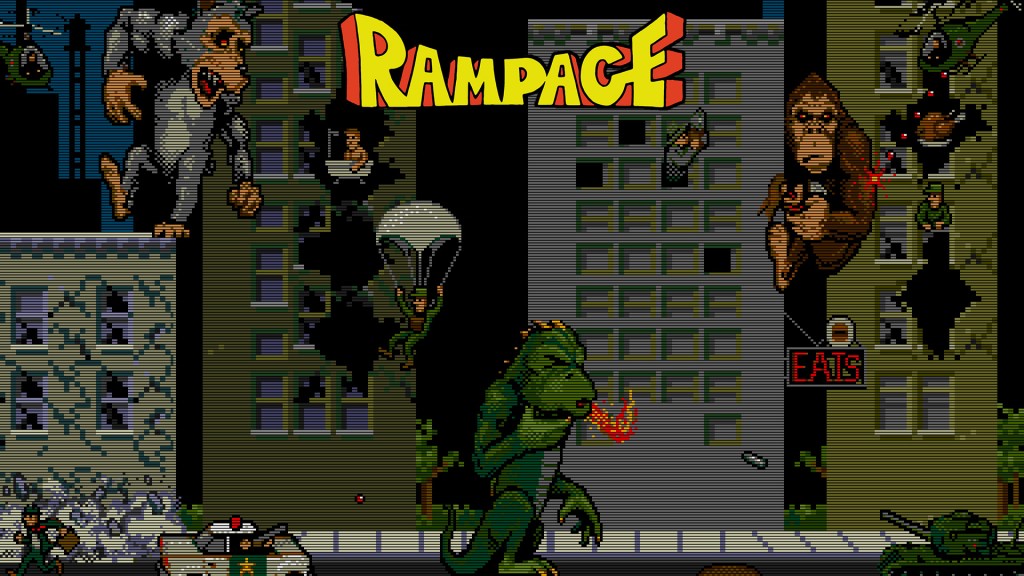
“What if Smaug were on our side?”
Pern. :::ducking:::
exactly.